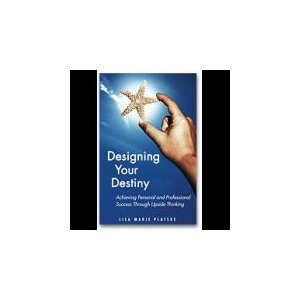What's Behind Your Belly Button? A Psychological Perspective of the Intelligence of Human Nature and Gut Instincts
The new book “What’s Behind Your Belly Button?” by Martha Char Love andRobert W. Sterling explains what your gut feelings are actually capable oftelling you about your inner instinctive needs, how to listen to the voice ofyour gut, and how to use both of your brains—head and gut—to work together foryour optimal health and well-being. Although numerous books and articles haverecently talked about the gut instincts as valuable in giving us useful hunchesin the decision-making process, “What’s Behind Your Belly Button?” goes muchfurther and explains how gut feelings not only have a psychologicalintelligence of their own, but are also understandably rational in theirfunctioning and reflect in their own voice how well the two instinctive humanneeds of acceptance and of control of one’s own responses in our lives arebeing met. While the authors make this material easy to understand, thepsychological explanations of gut intelligence and instincts in this book arecomprehensive and based upon clinical studies with hundreds people by the twoauthors.
Utilizing the research of Dr. Michael Gershon, M.D. on thegut brain or second brain, the workof Dr. Lise Eliot who charts the development of children from conceptionthrough the first five years of life, recent research of their own in thePsychology Department at Sonoma State University, and their vast clinicalexperience in career counseling and psychometry, the two authors of “What’sBehind Your Belly Button” have presented an interpretation of recent medicalresearch into a new revolutionary understanding of gut instincts and a moreaccurate behavioral understanding of the Self and human nature than haspreviously been available.
This book is recommended for anyone looking for a hopeful view ofhumankind and a method for getting in touch with gut instincts to reducestress, cope with fear and anxiety, deal with health issues and make efforts tostay healthy, and to increase optimal problem-solving and life-decision makingabilities. It is a book that would be useful for general audience readers as aself-help book, as well as for scholars of psychology, education, neurology,medicine, and business organizational leadership interested in the well-beingof healthy decision-making and the human condition. “What’s Behind Your Belly Button?”is now available for purchase on Amazon.com.
The Story Behind This Book
This book is a narrative of the maturation of the sciences (psychology and neurology) and the authors’ combined experience, all of which started to take form in the 1960’s with the unrest of youth over the Viet Nam war—the era of “give peace a chance”. In the 1970’s, the authors were involved in a college occupational and academic counseling-teaching assignment, dealing with the aftermath of the previous era of changes in society and integration of the cultures. Having no effective references with which to work, they used a personality inventory (MBTI), based on the work of Dr. Carl Jung. Experience with groups and individuals soon allowed feelings of the students involved to surface at a variety of levels, which were centered on personal disturbances of their pasts and were not defined by the inventory. Hours of study of what they were learning from students, suggested that the authors were tapping into genuine universal instinctive feeling intelligence, primarily focused in the gut area of the body. In 1998, neurological research at Columbia University published the work of Dr. Michael Gershon that identified the enteric nervous system as a center of feeling-intelligence in the gut, which he called the “Second Brain”. The authors carefully examined this material and accepted the research findings as pointing to the same universal feeling intelligence they had experienced in counseling with hundreds of people. Utilizing the research of Dr. Gershon, the work of Dr. Lise Eliot who charts the development of children from conception through the first five years of life, recent research of their own in the Psychology Department at Sonoma State University, and their vast clinical experience, the authors have presented an interpretation of recent medical research into a Gut Psychology and a more accurate behavioral understanding of the Self and human nature than has previously been available. They share a complete protocol and results of clinical research findings for the Somatic Reflection Process that they have created and used successfully, with themselves and hundreds of people, to assist the process of getting in touch with the voice of the gut and learning to follow its wisdom toward a healthy life—unifying the body-mind split in the individuation process. Over a period of 45 years, there has been a utilization of further graduate studies in Depth Psychology and Religious Education on the part of the authors, giant steps forward in the fields of neurology and human psychology, which help form a new more accurate image of human nature, and, with which to deal with many of the current human problems—individual and social. The authors present this new image of human nature and the meaning of its understanding in making positive changes in our lives, both individually and collectively as a specie. After careful examination of life’s processes, of all the mammals in the animal kingdom, humans seem to be the only specie that has been denied the open use of their natural instincts. Out of ignorance, fear or wanton control by others—“we are denied the use of the brains we were born with”. This awareness is of growing concern since the absence of the use of the feeling intelligence of the body eliminates, or at the least interferes with a major stabilizing force of human behavior and the ability of the body to combat stress and disease. This book also discusses the implications of this new image of human nature in education. The authors suggest that early in the child learning process, care be taken to offer the experience of freedom and acceptance to the preschool child to form a positive self-concept and to self-regulate his and her behavior as part of the learning process in becoming a loving, caring person. They also suggest that we are at the beginning of a Renaissance in human consciousness and that understanding our true human nature is the way to thrive in this era in which we live.












